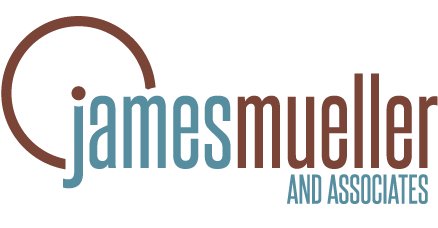Manage Your Team through Change (and Avoid 3 Common Pitfalls)
Managing change is a challenge that organizations constantly face. This was brought home to me again recently as I was reviewing resumes for a client—with the majority of the applicants describing how they are “effective in fast-paced environments.” The mercurial nature and volume of information have accelerated the cycles of change and constantly pressure organizations to adapt. But, change doesn’t just happen with the snap of our fingers. As those of us who have lead organizations through change are keenly aware, change needs to be thoughtfully managed.
In recent years, I’ve noticed three forces for change that appear frequently in the world of my clients—generational style differences, changes in revenue flow, and challenges by competitors. Though each of these has its own unique features, a similar change management plan can be employed.
Transformational Leaders

Management gurus advise executives to find and cultivate relationships with the key influencers who work within the matrix of the organization.
One of the newer monikers for those who effectively manage change is “transformational leaders.”
The six attributes ascribed to such leaders are the abilities to:
- articulate a vision
- provide an appropriate model
- foster acceptance of goals
- establish high-performance expectations
- offer support individually
- and promote intellectual stimulation.
Where do these leaders reside in a company? This has also changed—they can be found almost anywhere, regardless of the hierarchy.
Management gurus advise executives to find and cultivate relationships with the key influencers who work within the matrix of the organization. These are the individuals to whom peers turn for advice and direction. In order to bring about change, these are the individuals who must believe in the change. It is important to identify these people early on and enlist their support. They are actually easy to find… just ask around.
In tackling the topic of change management I’d like to discuss a few of the core practices and behaviors ascribed to transformational leaders that are important to managing change: trust and consistency, purpose and focus, clarity and alignment, and core values and culture. “Real-izing” these practices and behaviors is central to winning the confidence and support of key influencers and, through them, team members throughout the organization—and thus bring about change.
Trust and Consistency

It is critical for a leader who is managing change in an organization to establish trust. Balance is key. It is important to be optimistic and hopeful, and it is equally important not to over-promise.
Research on leaders’ influence in managing change reveals that it is indirect, that it is mediated by ‘followers trust” (Podsakoff, et.al). I often speak about the importance of trust. It is critical for a leader who is managing change in an organization to establish trust. Balance is key. It is important to be optimistic and hopeful, and it is equally important not to over-promise. You need to be perceived as a reliable, trusted source.
Second, you need to demonstrate your commitment to the change through words and actions. If new behaviors or ways of doing business are required, demonstrate them in your own choices and conduct.
Third, listen empathically. For most people, change doesn’t come easy. They feel vulnerable and unsure. And they need to know that their confidence will be kept. And in all of these things, you need to be consistent. People need to know how to read you and know that they can depend on you to be that person—a stable center in the storm of change.
Purpose and Focus
The most powerful driver of change is a clear sense of purpose, a clearly articulated rationale of why the discomfort and disruption are worth it. I am a fan of the phrase “noble cause.” We all need to be inspired, to have a vision, to set our sights high on a compelling aspiration. When managing change, it is very important to articulate that vision, why it is a good thing, and what positive things will come from pursuing it.
In team conversations, continually bring focus to opportunity and solutions—not the problems. There is plenty of evidence that focusing on problems narrows thinking and limits innovation and creativity. Problems will always be there. The good news is that they bring clarity about what you don’t want—but even greater clarity about what you do want. So focus on the latter. Cultivate generative thinking about how you can achieve your aspirations. Engage teams in solution session. Concentrate on developing possibilities, strategies, and traction steps.
Clarity and Alignment

Make sure you bring attention to how everyone contributes to achieving the cause. Liberally recognize contributions, develop ways to celebrate regularly. Convene staff meetings regularly, rally the troops, and create esprit de corps. And be a nice person.
Purpose and vision must be complemented by clarity of expectations. Certain things must change and leaders need to be crystal clear and explicit about what must be different—whether behaviors, activities, or processes—and it’s usually all three. Immediate, positive reinforcement is the most powerful leverage. Most team members will respond positively. So, make sure you bring attention to how everyone contributes to achieving the cause. Liberally recognize contributions, develop ways to celebrate often. Convene staff meetings regularly, rally the troops, and create esprit de corps. And be a nice person. It’s supported by the research. Liking people—or as one study puts it, ones’ ‘positive conceptions of followers’—directly impacts performance.
Nevertheless, there will be team members who continue on an old track, and it is equally important to intervene immediately. Although every team member must comply with organizational HR policies and procedures, when possible, I recommend the following. First of all, determine whether there is a key influencer who is best positioned to have this conversation? Then, in structuring the conversation, rather than begin with criticism or a description of what is wrong, begin with engaged coaching. This is an inquiry approach that starts with asking team members about their perceptions of their performance and what they would like to achieve. Then ask them about the items that have come to your attention—why they are not aligned with the new expectations. Ask them to talk about the positive aspects as well as the challenges they see associated with the new organizational expectations.
However the conversation proceeds, before it ends, you need to reinforce that the new expectations are non-negotiable. You may want to offer coaching, regular feedback, or other resources to help them succeed.
One important reason I recommend this approach during times of change is that people notice how you treat team members. By giving everyone the benefit of the doubt and not putting them on the defensive, you send a message to others that you are reasonable and fair.
Begin by defining your values—what they mean to your organization. Describe how they are realized in the services and products you provide. Print them and post them in public places—especially the boardroom. Reference them in your literature, publish them on your website. And talk about in your staff meetings. Ask staff members to describe how they affect their jobs each day. Write newsletter articles and blogs about them. Make it impossible for people not to know what they are and what they mean.
Core Values and Culture
Finally, I want to talk about the role of values in managing change. By paying attention to the visibility, familiarity, and interpretation of values in the workplace, you can influence the culture as it evolves. One definition that I like in particular is the description of culture as “the prevailing ideology that people carry inside their heads… unwritten and often unspoken guidelines for how to get along in the organization” (Cameron/Quinn).
Begin by defining your values—what they mean to your organization. Describe how they are realized in the services and products you provide. Print them and post them in public places—especially the boardroom. Reference them in your literature, publish them on your website. And talk about in your staff meetings. Ask staff members to describe how they affect their jobs each day. Write newsletter articles and blogs about them. Make it impossible for people not to know what they are and what they mean.
Most importantly, connect them to the change that you are managing. Be explicit about how the values of the organization are fully realized in the change that is underway, and how the organization will be better or stronger or more effective for its constituency because of it.
The decision to change can be hard; the process of change is always harder. But if you follow sound practices, the organization and everyone associated with it will benefit.

